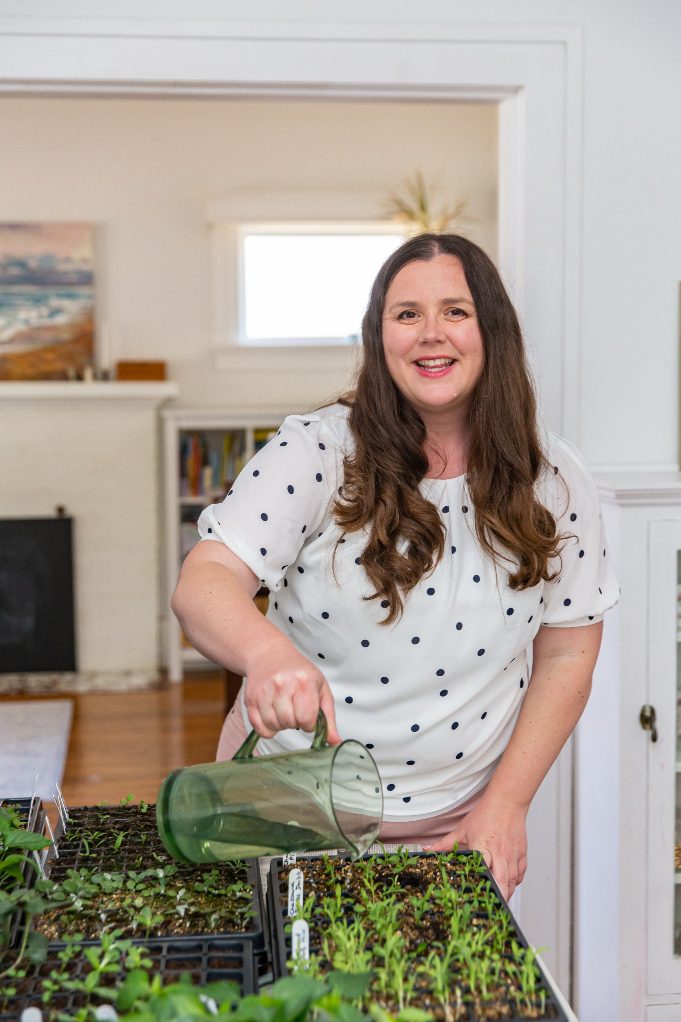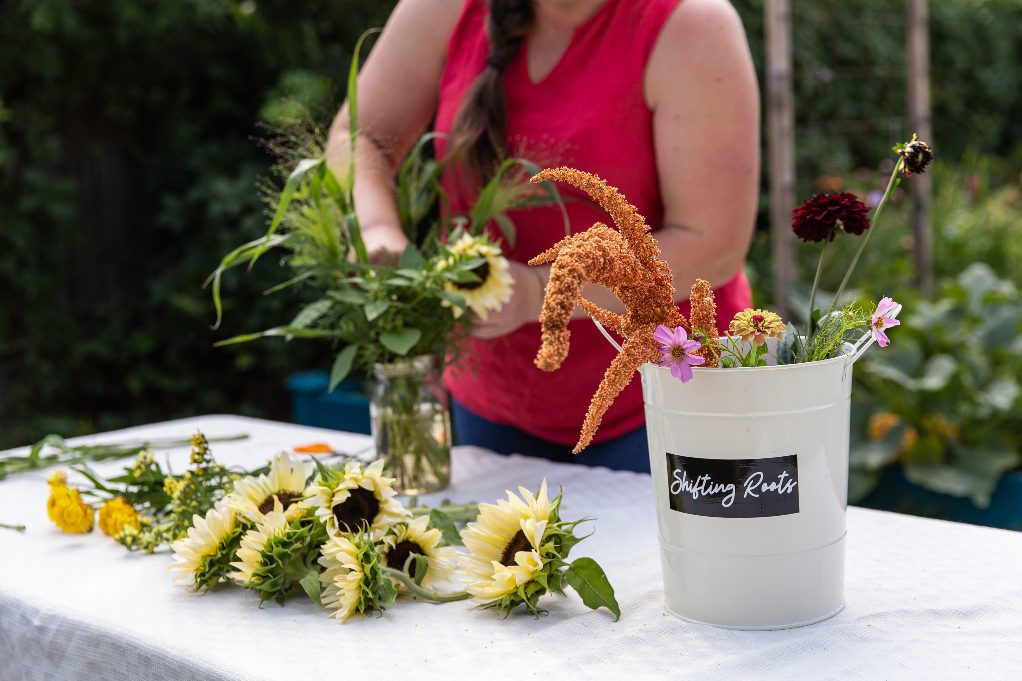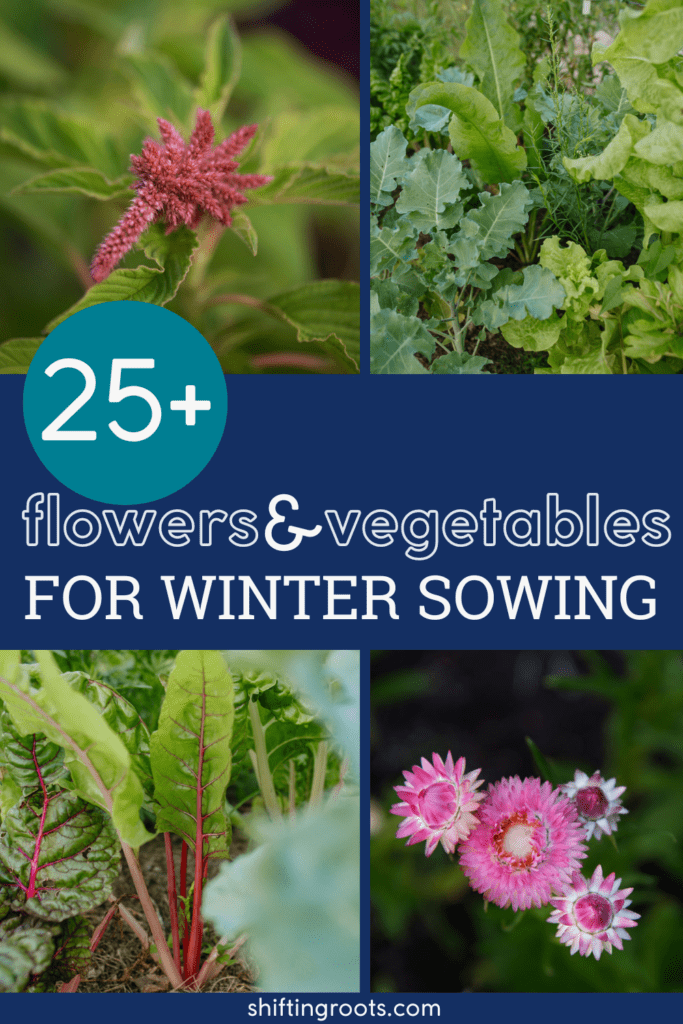Winter sowing vegetables and flowers is a wonderful way to start strong seedlings that don’t really need hardening off. Over the winter, you can save your milk jugs, fill them up with soil and seeds, and be rewarded with your own seed starters in the spring. However, some seeds lend themselves to winter sowing better than others.
In this post, I’ll provide a list of the best flowers and vegetables to start in your milk jugs over the winter. As well, we’ll go over the process behind winter sowing and discuss why some vegetables are better than others.

Disclaimer #1: I personally garden in Zone 3b in Saskatoon, Saskatchewan, Canada. We have a cold climate and a short growing season that’s around 100 days. Since our last frost date is so late–somewhere around the 3rd week in May–we can put our milk jugs for winter sowing out in April and still see results. So, even though it’s called winter sowing, for me it’s a bit of a misnomer as I’m “sowing” seeds in spring because it’s still so cold.
Disclaimer #2: This post contains affiliate links, which means that if you purchase something, I earn a small commission at no extra cost to you. You can read more about it here in my privacy policy. Thanks for supporting Shifting Roots!

Winter Sowing is Not the Same As Seed Starting Indoors
I confess that the reason I’m even writing this post is that I’ve gotten a lot of messages from readers asking me if they can start this or that vegetable, how the plant can possibly germinate in freezing temps (it can’t), or if you start your seeds on a schedule like you would when you’re seed starting indoors.
Winter sowing is not like indoor seed sowing! There is no real “schedule” except getting the plants out the door and on your deck before they germinate indoors and before all the freezing temps are over.
The plants will not germinate until they are actually warm enough in their milk jugs to do so. The only thing you have to do is make sure that, once most of the outdoor temperatures are above freezing, your jugs have enough water. That’s it. Let Mother Nature do the rest.

When do you plant your seedlings?
I generally check my jugs when the snow melts, which usually ends up being sometime in mid-April. Look to see if the soil is dry and water it accordingly. If you do not keep up with the water at this point, your winter sowing will not be very successful.
Once my seedlings are larger, approximately 2-4 inches tall, I transfer them out into the garden. This usually ends up being around early to mid-May. The seedlings don’t require hardening off, but they do require covering if the temperature dips below freezing overnight.
Winter Sowing was Originally Intended to Start Perennial Flowers From Seed
Winter sowing is one of the cheapest and easiest ways to grow new perennials, especially if you’re not lucky enough to know someone with an established garden willing to divide their perennials. Basically, if you find seeds for perennial flowers, they are likely a good candidate for winter sowing. Like any first-year perennial flower, these plants will be small and flower late or might not even flower at all. However, in 3 to 5 years, you’ll be rewarded with a beautiful full-sized perennial that you didn’t have to pay a lot for.
Annual flowers and vegetables do not require cold stratification to grow and were not originally intended to be started as seedlings using the milk jug method. However, some of them do work, and it’s a great way to start seeds without a south-facing window, grow lights or even space in your own home.
If you want to learn more about the process of creating your own milk jug garden, check out this blog post or watch the YouTube video below:
Vegetables for Winter Sowing
- Arugula
- Asian Greens
- Beets
- Bok Choi
- Broccoli
- Cabbage
- Cauliflower
- Cress
- Kale
- Lettuce
- Peas
- Radish
- Spinach
- Spring Onions
- Swiss Chard

Annual Flowers for Winter Sowing
- Amaranth
- Bachelor’s Buttons
- Bells of Ireland
- Calendula
- Cosmos
- Larkspur
- Marigolds
- Poppies
- Sunflowers
- Strawflowers
- Sweet Peas
- Zinnias
If a vegetable or flower is not on this list, it’s probably because it has too long of a date to maturity or needs to be seed-sown the traditional way with grow lights more than four weeks before the final frost. Using those rules, plants like snapdragons, tomatoes, Brussels sprouts, artichokes, and peppers are not good candidates for winter sowing, especially if you have a short growing season.

I hope this list helps you in your winter sowing journey. Remember to keep track of it all in your garden planner, and happy growing! If you liked this blog post, find me on Facebook, TikTok, and Instagram for more cold-climate gardening tips, delicious recipes, and cut flower goodness! I also make weekly videos over on my YouTube channel. I hope to see you there!
NEED HELP IN THE GARDEN?
Green thumbs aren’t just given out at birth.They’re a combination of learning about gardening and trial and error. If you wish you knew more about gardening and had more confidence in your abilities, you need the Growing Roots Beginner Gardening Guide.
It’s an e-book plus six bonuses–everything you need to go from complete garden newb to confident in one growing season. Get all the details of what’s inside here.




anne
Sharon McLeay
Tala Schlechte
Kathleen OMeal
C
Sharon
Jill Humphrys
Dee Hancock